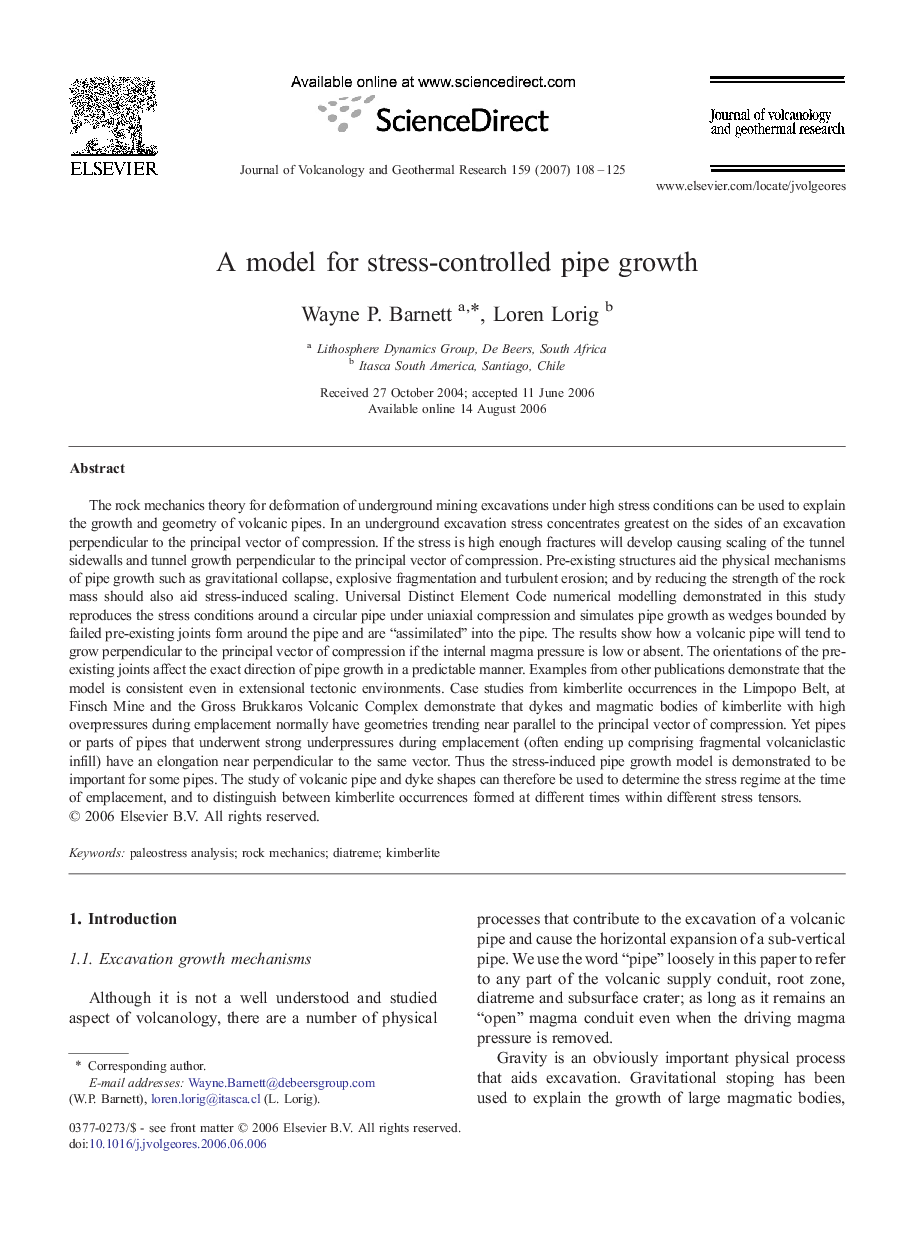| Article ID | Journal | Published Year | Pages | File Type |
|---|---|---|---|---|
| 4714110 | Journal of Volcanology and Geothermal Research | 2007 | 18 Pages |
The rock mechanics theory for deformation of underground mining excavations under high stress conditions can be used to explain the growth and geometry of volcanic pipes. In an underground excavation stress concentrates greatest on the sides of an excavation perpendicular to the principal vector of compression. If the stress is high enough fractures will develop causing scaling of the tunnel sidewalls and tunnel growth perpendicular to the principal vector of compression. Pre-existing structures aid the physical mechanisms of pipe growth such as gravitational collapse, explosive fragmentation and turbulent erosion; and by reducing the strength of the rock mass should also aid stress-induced scaling. Universal Distinct Element Code numerical modelling demonstrated in this study reproduces the stress conditions around a circular pipe under uniaxial compression and simulates pipe growth as wedges bounded by failed pre-existing joints form around the pipe and are “assimilated” into the pipe. The results show how a volcanic pipe will tend to grow perpendicular to the principal vector of compression if the internal magma pressure is low or absent. The orientations of the pre-existing joints affect the exact direction of pipe growth in a predictable manner. Examples from other publications demonstrate that the model is consistent even in extensional tectonic environments. Case studies from kimberlite occurrences in the Limpopo Belt, at Finsch Mine and the Gross Brukkaros Volcanic Complex demonstrate that dykes and magmatic bodies of kimberlite with high overpressures during emplacement normally have geometries trending near parallel to the principal vector of compression. Yet pipes or parts of pipes that underwent strong underpressures during emplacement (often ending up comprising fragmental volcaniclastic infill) have an elongation near perpendicular to the same vector. Thus the stress-induced pipe growth model is demonstrated to be important for some pipes. The study of volcanic pipe and dyke shapes can therefore be used to determine the stress regime at the time of emplacement, and to distinguish between kimberlite occurrences formed at different times within different stress tensors.
